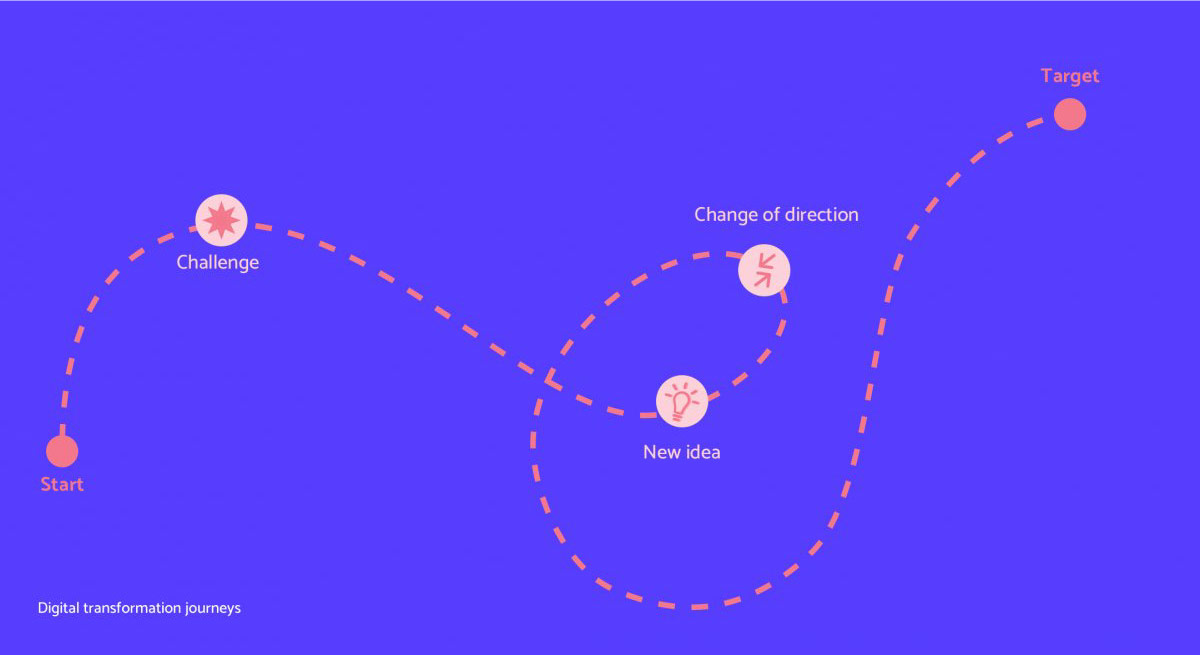You may have noticed our social media pages have come to life recently with lots of noise from our recent Leeds Digital Festival (LDF) talks. Over the past two years, we have been supporting the Leeds based festival which involved over 200 events last year over the two weeks.
However, this year following the Covid-19 crisis and the need to work remotely, the festival announced they would be going entirely virtual and opening up events worldwide. It was incredibly inspiring to see over 1100+ people from all over the world, sign up to our talks and witness the buzz of engagement throughout and after the sessions! But don’t worry if you missed out on all the action, we are here to handpick the key takeaways and tips you can put into practice immediately.
Design Thinking Dad
So let’s start! To kick off our series of talks, Paul Bailey told us about ‘Design Thinking Dad’. He focused on how you can use Design Thinking to tackle everyday problems as a parent. Paul took us through multiple examples that left us starry-eyed, such as the “How Might We” method to plan “an awesome day”. He also spoke of how he created a quicker and livelier school run called the “Dot to Dot Dash”.
Paul also explained his solution to the “are we nearly there yet?” question that never goes a miss during long car journeys. He introduced the “in-car progress bar” to help identify at what stage you are within a journey and how far you have left to go. This gives a visual indication which can be easier for children to understand, compared to a time reference. All you need to do is create an imaginary line going from one side of the car windscreen to the other. Then, when the kids ask the question, you can give a visual indication of where you are in the journey.
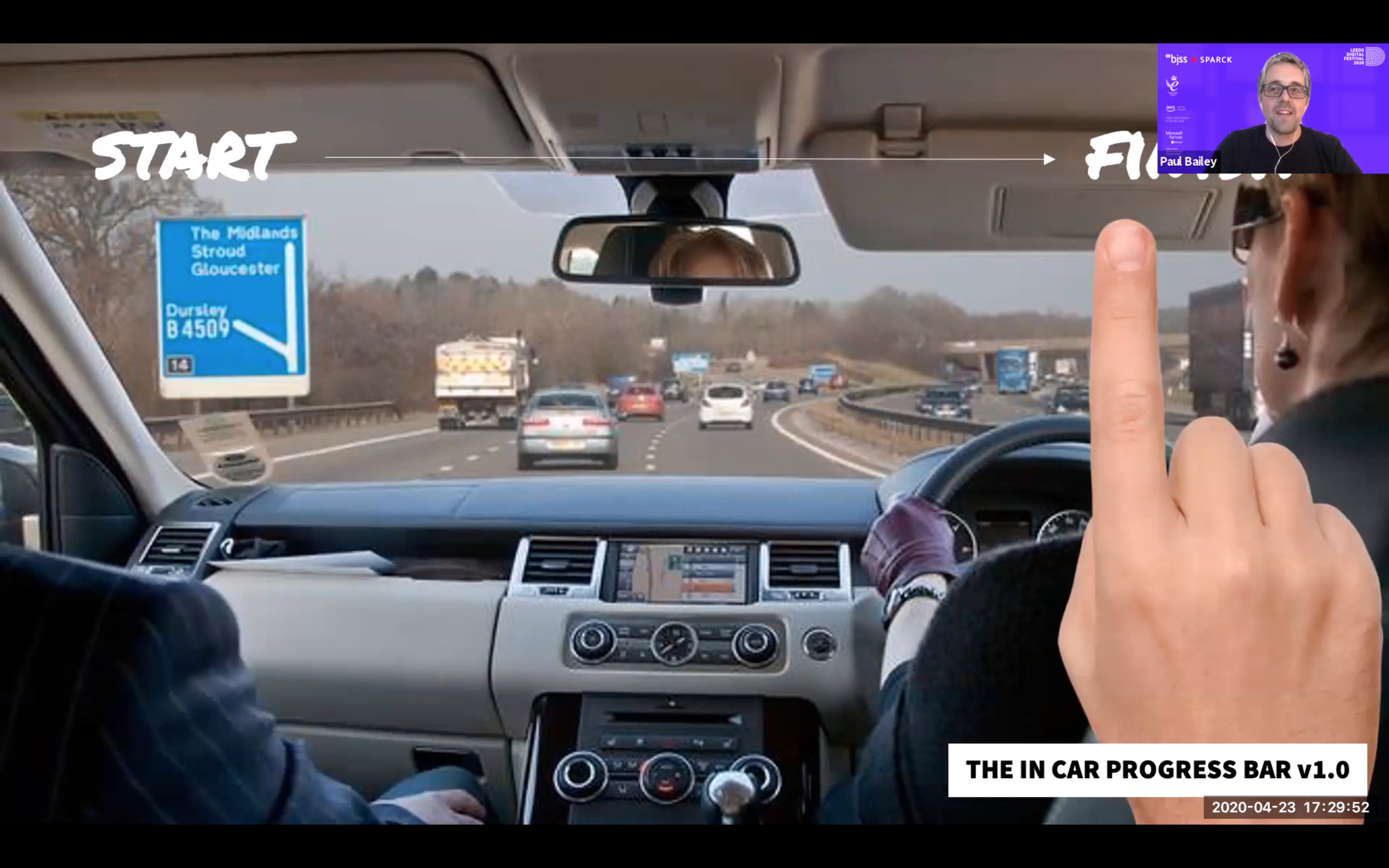
Here are Paul’s design thinking tips to tackle the million-pound question: “How to survive lockdown with your kids?”
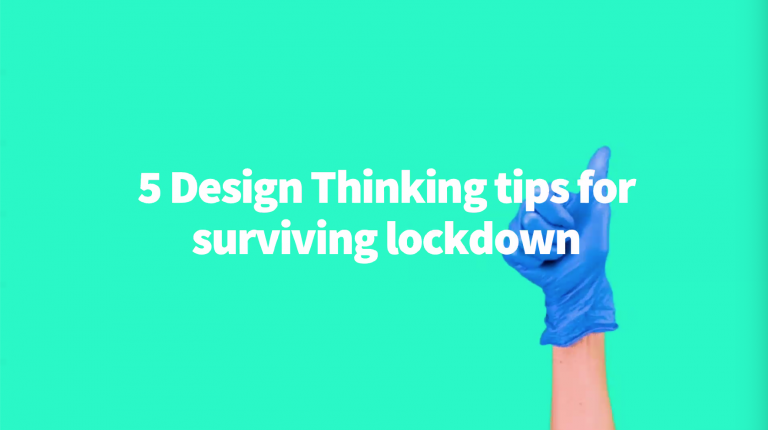
- Agree on ways of working with your ‘co-workers’
- “Don’t make your home into a classroom. Make it into a creative space”. You need to show your work and make it visual. Create an environment where it’s ok to get things wrong
- Reframe ‘problems’. Reframing is how designers become “unstuck”. Allow yourself to step back and look at the bigger picture. Each problem is an opportunity and an invitation to try something new!
- Engage their curiosity. It is important that kids ask “why” - don’t let them lose that!
- “If you take anything from this session – try an experiment”. It might not change the world, but it will create a little bit of joy in your day to day life.
The Art of Influencing People
Next to take to the (virtual) stage was Silvina Couto with how we can develop relationships, and communicate effectively and confidentiality, in and out of the workplace.
“Emotional intelligence starts with developing an understanding of yourself, who you are, what are your strengths and your weaknesses? What do you have to say about the world?”
Silvina started by explaining how emotional intelligence is a soft skill that identifies, assesses and controls your own emotions and those of others. Emotional intelligence allows you to reflect on your emotions so you can grow emotionally and intellectually.
Two different personality tests were introduced to us, the first being the Myers-Briggs Type Indicator. This a self-report inventory that was designed to identify your strengths, weakness, preferences and compatibilities. If you complete the questionnaire, you are placed into 1 of the 16 personality categories.
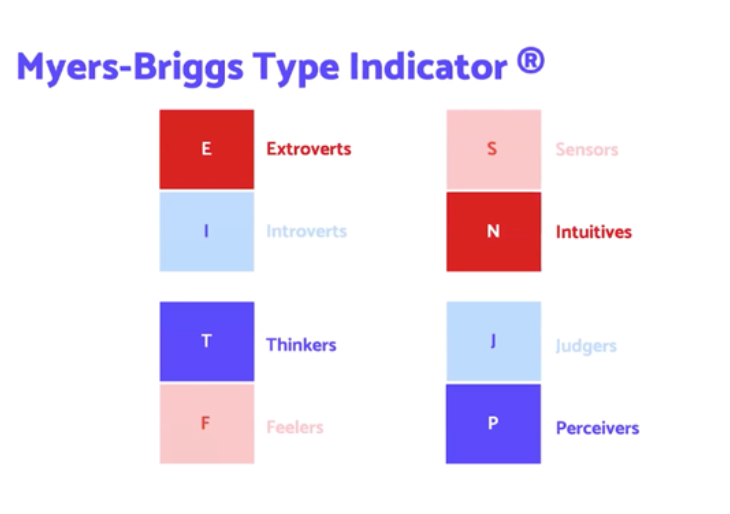
One of the many highlights of this talk came from the explanation of the DISC assessment, where Silvina used ‘Pug Persona’s’ to explain the four different personality types.
Who do you think you’re more like? Darren? Isabel? Samantha? Or Chris?
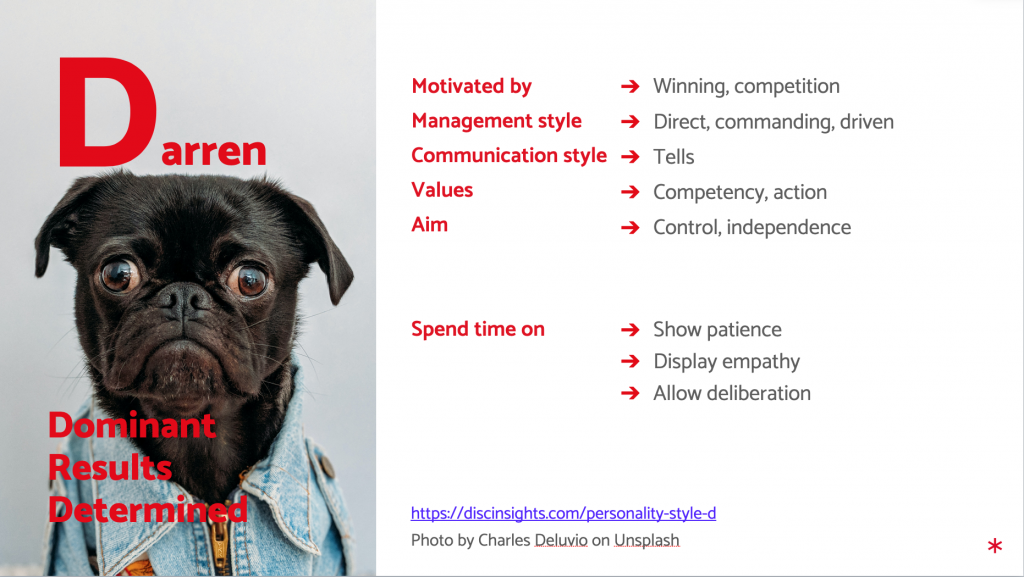
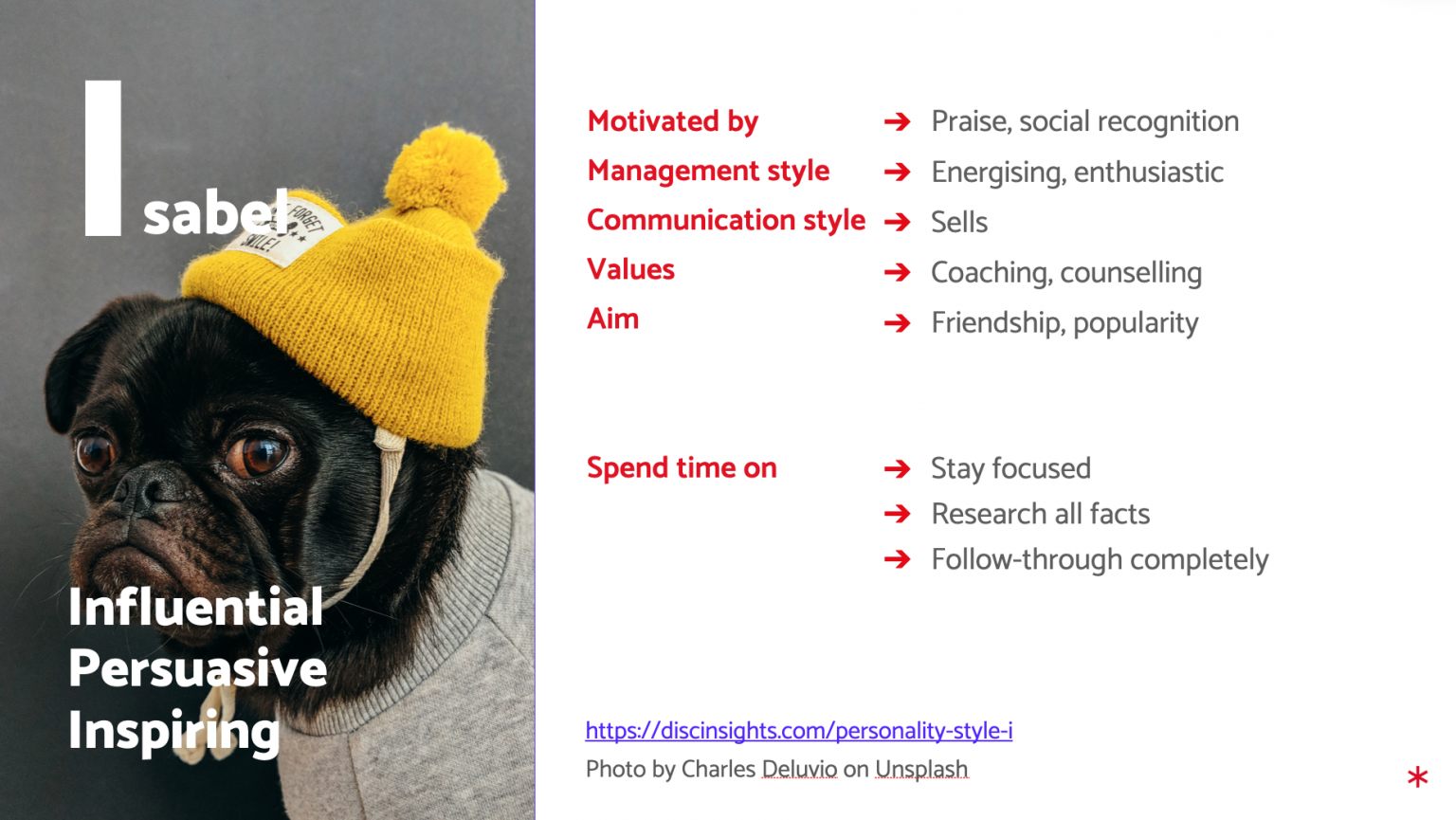
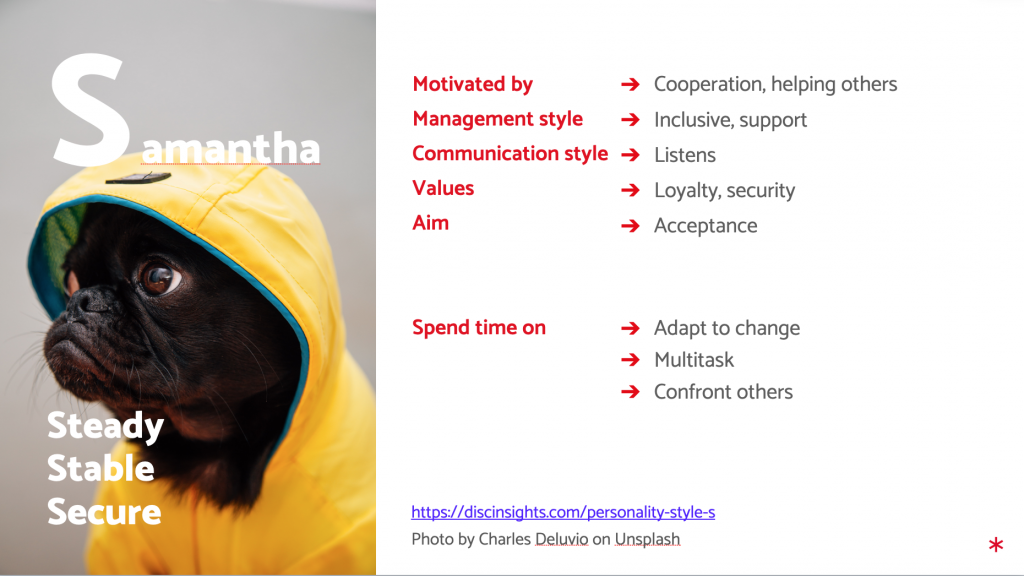
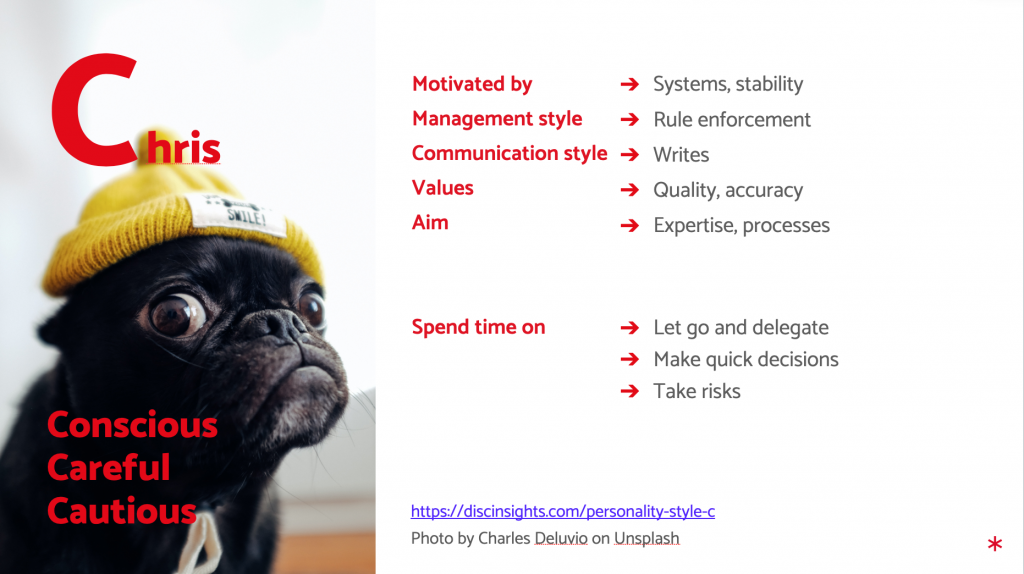
While deciding which pug we felt more related to, Silvina recapped her top key points from the session:
- “Influence is rooted in emotional intelligence”
- The basis of emotional intelligence comes from understanding ourselves, our environments, our impact on others and managing ourselves accordingly
- Context is important during interactions as people will likely behave differently depending on the context
- Implementing the “plan > execute > reflect > conclude” framework that can help to flex that emotional muscle – Honey and Mumfords (1986) Learning Styles.
Yes. We. Can (all think like a Service Designer and why it’s so important)
Friday lunchtime brought us the fast-paced and highly interactive “Yes. We. Can” talk run by Nat and Alicia, who are based in our London office. The session was focused on how to bring empathy, energy and ideas into your team rituals and projects while thinking like a Service Designer.
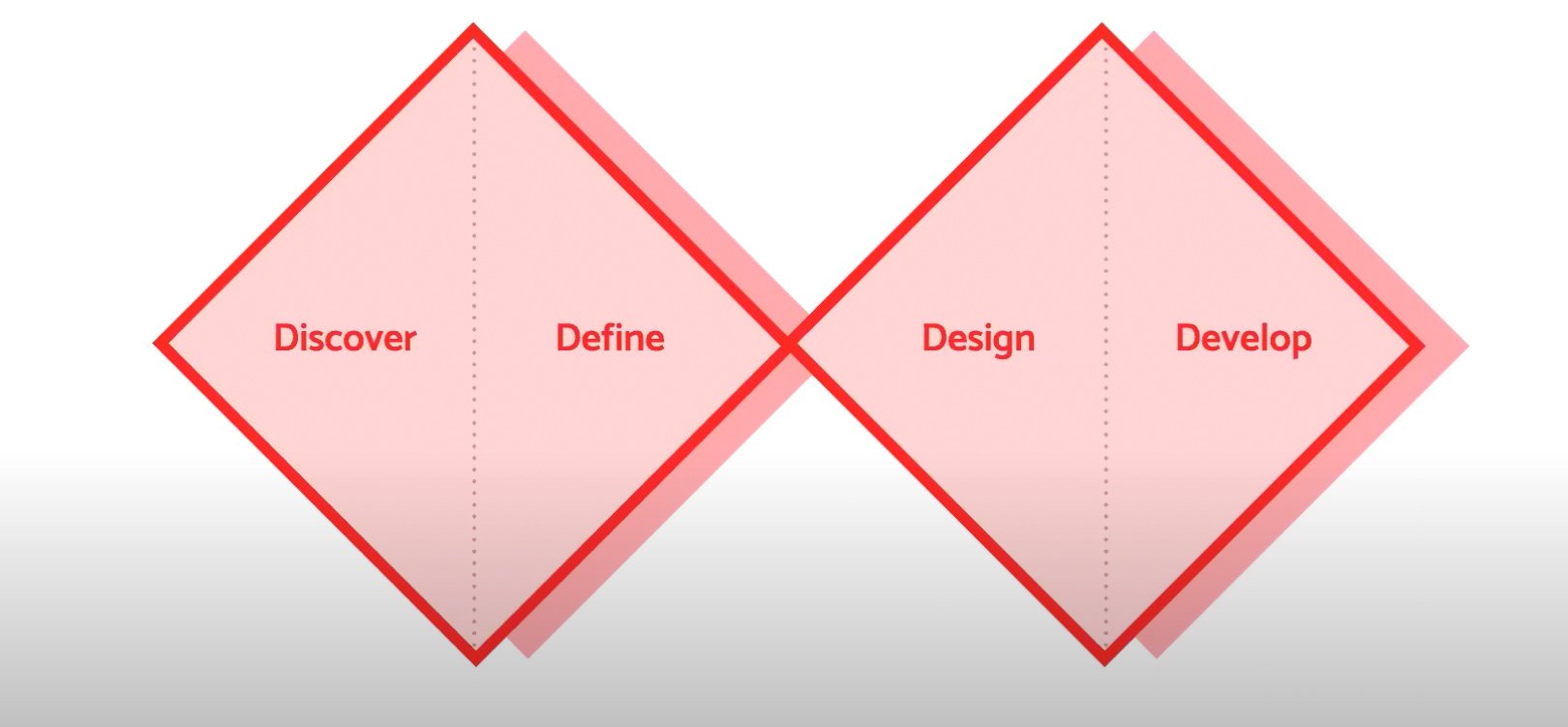
Once introductions were out of the way, the famous Double Diamond framework appeared, which was noted as a favourite within the design community. Nat explained how this has been adapted in Service Design to become an “iceberg” as she mentioned: “When it comes to Service Design its all about going below the surface and understanding the people, processes and systems that are all involved in creating and delivering an experience”. It’s more than what you see...
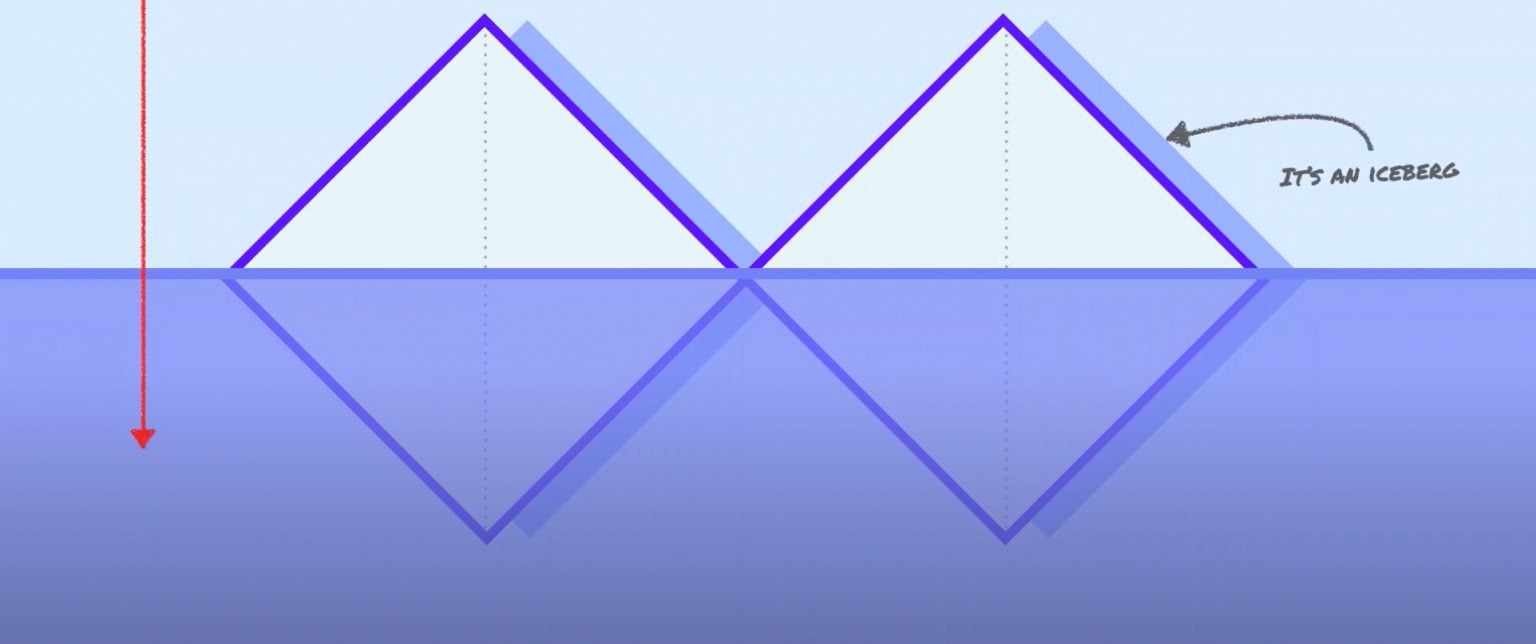
Double Diamond
Step 1: Discover
First, we need to learn all about peoples' behaviour and feelings as this can lead to identifying problems and opportunities. This phase is usually overlooked as people often already have assumptions (which could be wrong!). You can do this through observation, immersion, interviews and empathy.
Step 2: Define
Now you need to spot opportunities so you can start to frame the problem and recognise what the goal is. This can be done through pattern spotting, journey mapping and creating personas.
Step 3: Design
By using methods such as How Might We’s, opportunity mapping, trends and brainstorming, you can now start to generate ideas!
Step 4: Develop
This should be the point where you feel ready to show your ideas and find out if you can solve the problems users were originally facing. Make sure to visualise what the outcome could look like through storyboarding, service blueprints and prototypes (lego and pipe cleaners were the recommended non-digital fun alternatives).
After a whistle-stop introduction to Service Design, we were given four top takeaways:
- Don’t take everything at face value. Understand what people are thinking, feeling and doing
- Focus on what people are trying to achieve, not only their challenges
- Think like an entrepreneur and reframe the problems as opportunities
- Cover all bases by looking above and below the surface (of the iceberg).
The Journey to Digital Transformation
To finish off the two-week run, Davide talked us through what a Service Designer's role is in reality, with his accounts and benefits of using Design Thinking in projects.
“I look at how organisations can deliver the best experiences to end users, across multiple channels. My work goes beyond the traditional boundaries that are set up by organisations.”
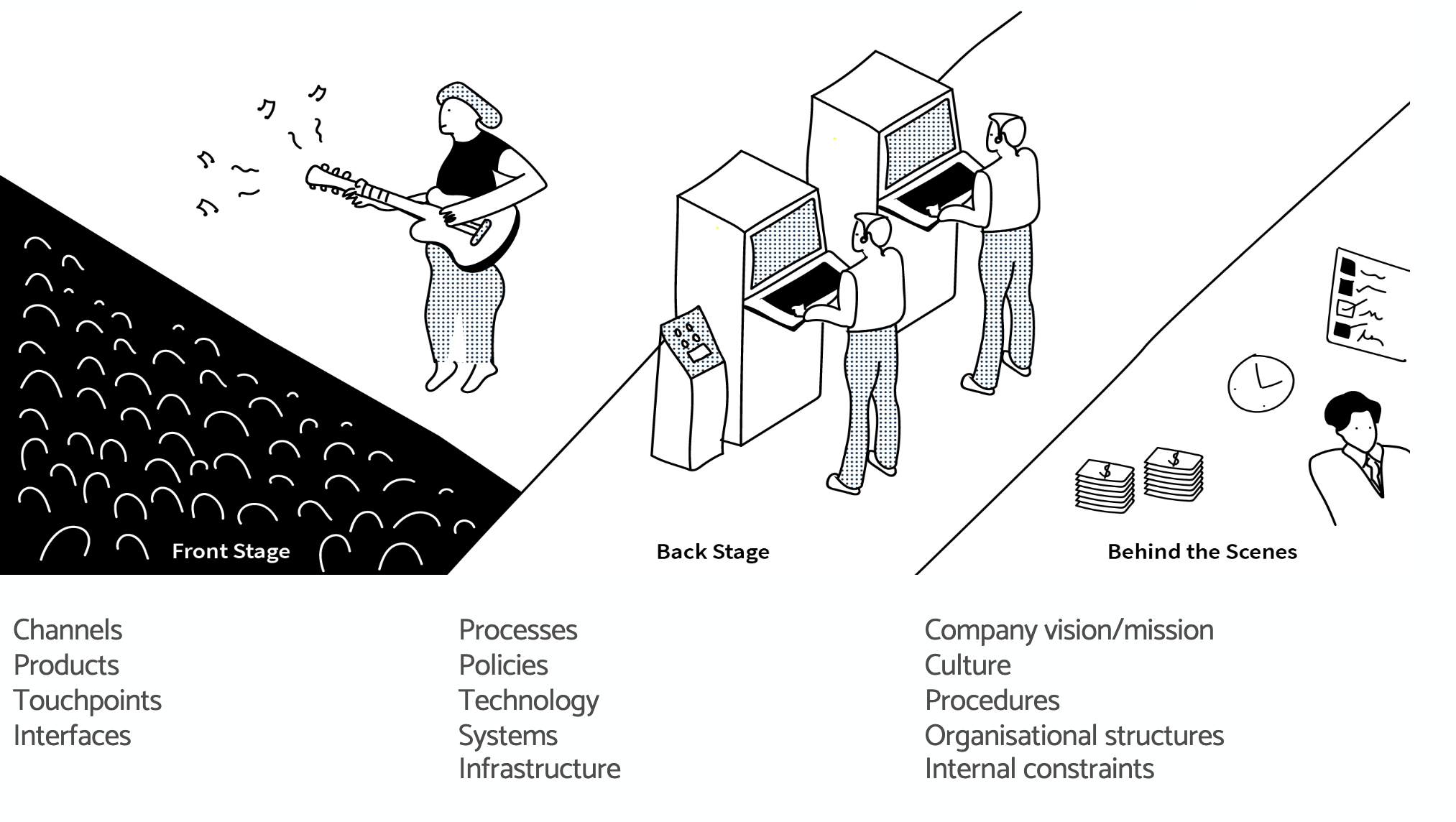
To expand on this further, he used the above analogy to demonstrate all the people and actions involved to create a successful service. He highlighted that users usually only see the ‘front stage’ but behind that, there are lots of people in the background working “backstage” and “behind the scenes”. These people are trying to create the best possible experience for their users.
As a Service Designer, it is important to understand how to make both users and businesses happy. “I used to hope for the perfect project” - Davide spoke about how he learned that not all projects are straightforward and easy. “Stop expecting the perfect project, because digital transformation is a journey”.
By going into detail about challenges he has previously faced as a Service Designer and how he managed to overcome them, he identified two key issues that stood out. One was understanding the people involved in the journey and the second was creating effective ways of working.
Lucky for us, he provided some top tips to say how he used Design Thinking principles such as empathy, collaboration, action-focused, visual thinking and reframing problems to overcome these.
Top tip 1: Empathy – Adopt a research mindset with your stakeholders to get to know them better. Understand their experiences, expertise and learn to speak their language. Have they previously tried to rectify this problem? If so, how did it go? What went wrong?
Top tip 2: Collaboration – You can’t deliver amazing experiences with just you and your team. You need to involve your stakeholders! Master the art of facilitation and invite them to creative sessions. Encourage them to sketch and take part in fast ideation sessions by doing exercises like crazy 8’s.
Top tip 3: Action Focused – Find space in the organisation that will allow you to test and learn. Show how Design Thinking can deliver great things.
Top tip 4: Reframe – Tear apart the brief and provide a different understanding of the problem. Use easy, straightforward language and try to visualise the problem.
To finish, Davide spoke through his key takeaways for going through a digital transformation journey:
- Adjust your journey – accept challenges, define your journey and have a direction
- Understand people – spend time doing thorough user research
- Ways of working matter - take time to reflect, care about internal staff and always deliver value
- Invest in your design team – design is more than just “pretty pictures”. Empower your team. You need business, tech and design to deliver digital transformation.
So that’s a wrap! If you have a little more time on your hands or want to get into all the nitty-gritty details, then you can find a link to all of our sessions here. And if you had a question that sadly didn’t get answered during the sessions due to time limits, we went back and answered all of them here!


